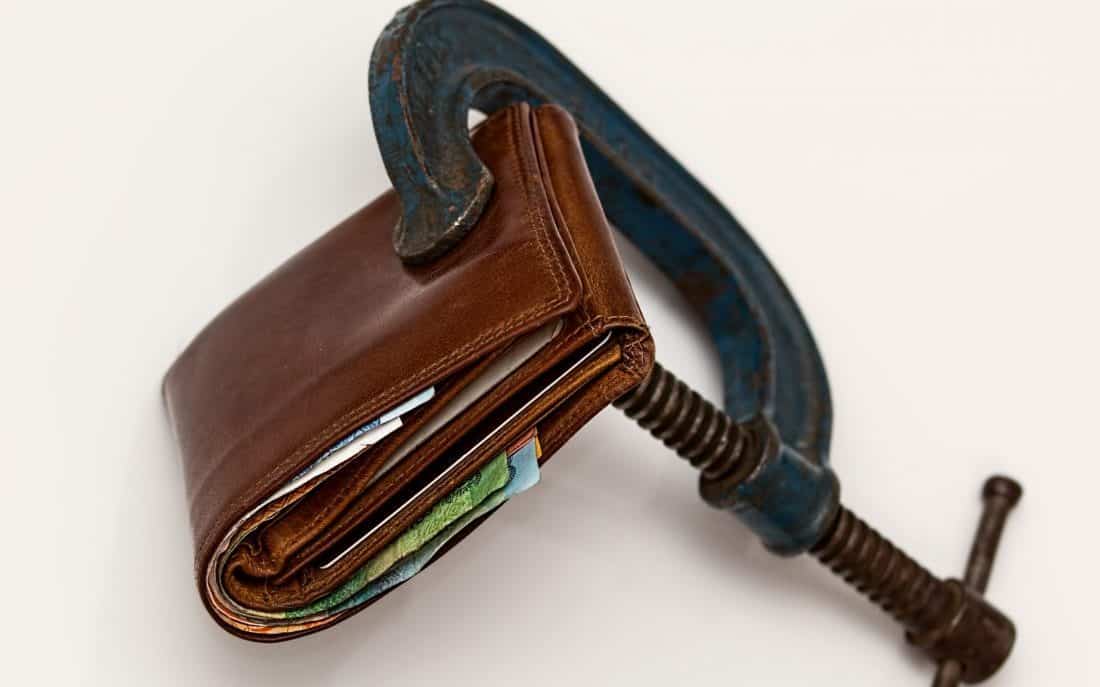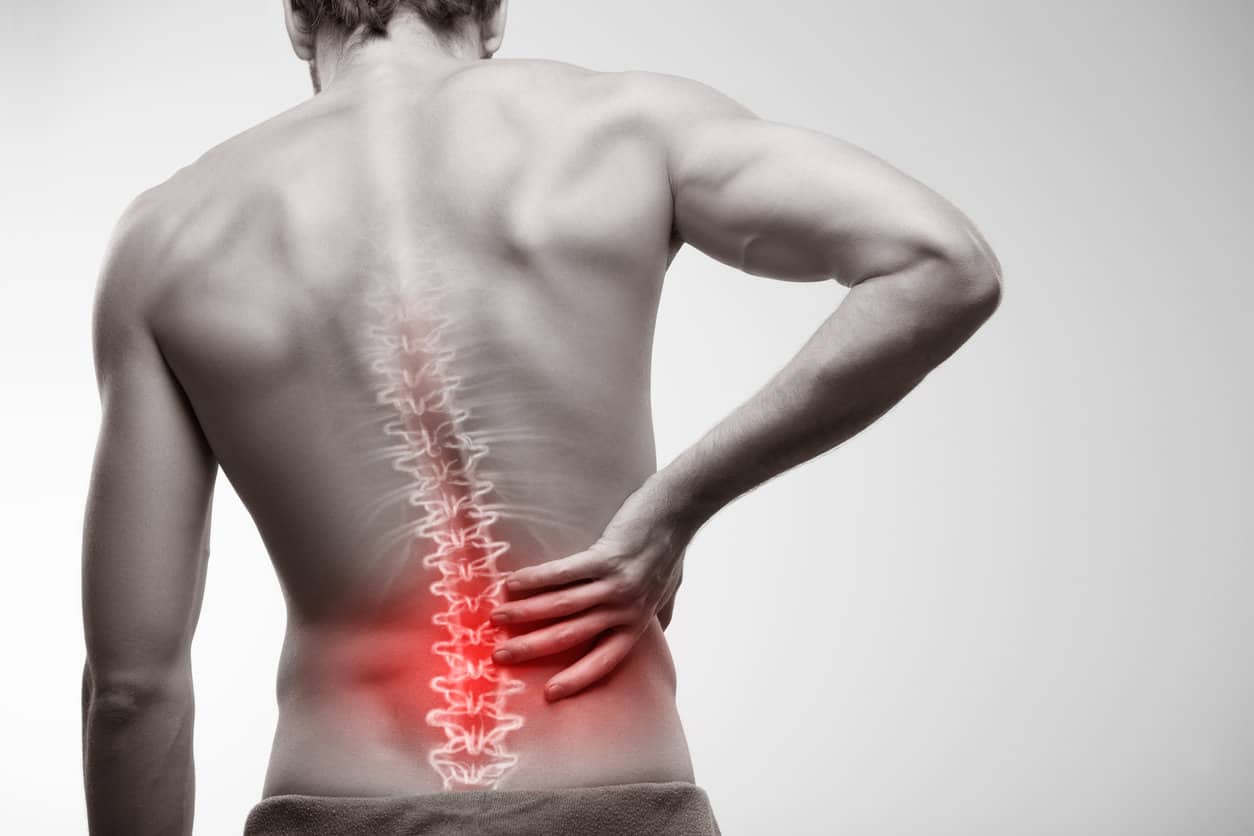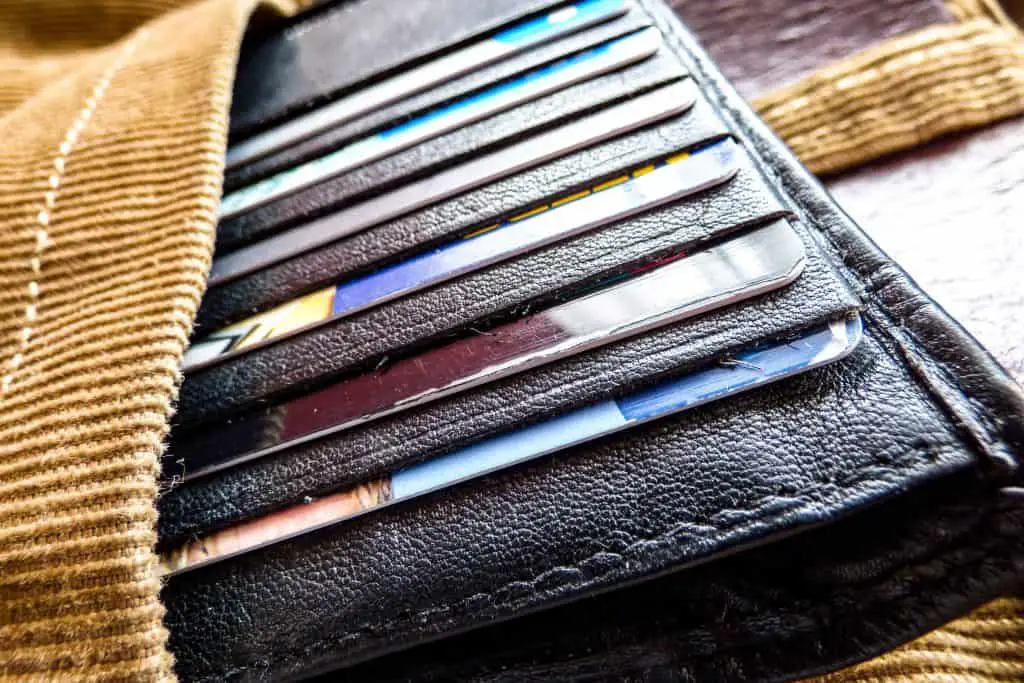“Fat Wallet Syndrome” might sound like a good problem to have–who doesn’t want a bit of extra cash?–but your wallet could very well be the cause of your persistent hip and back pain. Read on to find out why you need to slim down your wallet asap.

What is a Costanza Wallet?
“Look at this thing. It’s huge!” Jerry Seinfeld tells George Costanza, picking up his wallet, whose contents are overflowing. Holding the bulky wallet one hand and George’s cheeseburger in the other, Jerry tells him, “You’ve got more cow here than here.”
In this classic episode of Seinfeld, George refuses to slim down his overstuffed wallet, claiming everything in it is absolutely essential–from Irish banknotes to coupons for Orlando area stores he’ll likely never return to.
Even when his wallet is clearly causing him back pain, George continues to stuff what amounts to useless garbage into it until it ultimately explodes all over a snowy street corner.
Many of us were accustomed to carrying (often overstuffed) wallets in our back pockets. More recently, this has begun to change, as we’ve found that keeping your wallet in your back pocket makes you an easier target for pickpockets and can even wreck your jeans. Yet many of us, like George, remain unconvinced that we should–or even can–slim down and move our wallets to our front pockets.
But carrying your wallet in your back pocket has other, even worse potential consequences than a bursting cloud of receipts on the sidewalk. A bulky wallet kept in your back pocket can put you at risk for serious health problems, back and hip pain in particular.
According to health experts, sitting on your wallet can not only cause temporary discomfort, but actually puts you at risk of longer term joint and nerve damage.
How Your Wallet Can Cause Pain and Discomfort
Chiropractor Dr. Arnie Angrist tells the Huffington Post that sitting on your wallet leads to an “imbalance that distorts your pelvis and hips.” Having a bulge in your back pocket makes one of your hips sit higher than the other and the lumbar region of your spine (your lower back) shifts with it.
To compensate for this imbalance and keep your line of sight even, your thoracic spine (mid-back) will bend sideways, too. This can shorten and pinch important muscles in your lower back that help control posture, like your quadratus lumborum, paraspinals, obliques, and transversus abdominis. It also pinches your sacroiliac joint, which can negatively alter your gait and lead to even worse problems with your hips, knees, and feet.
But that’s not all.
Dr. Stuart McGill, professor of spine biomechanics at the University of Waterloo, tells Men’s Health that keeping your wallet in your back pocket pinches your sciatic nerve. This large nerve extends from your lower back through the hip region and down the back of each leg.

When it is pinched at the hip joint or becomes inflamed, it can cause pain that radiates from your hip into both your lower back and down your leg. This pain, often coupled with feelings of burning, tingling, numbness, or general weakness, is known as “sciatica.” In the worst cases, the pain and burning can even extend all the way down to your foot.
In addition to biomechanical abnormalities and sciatica, keeping your wallet in your back pocket can also lead to other kinds of pain, like what experts call “piriformis syndrome.”
Your piriformis muscle begins at the lower part of your spine and connects to your upper femur or thighbone. It helps to rotate your hip and enables your to turn your leg and foot outward. It runs diagonally across the sciatic nerve. Sitting on your wallet can cause this muscle to spasm and leave you with pain in your hip and buttocks.
It’s Not Just Temporary Pain – It’s Long-Term Damage
It seems like there should be an easy solution, right? If you’re having pain, move your wallet. The truth is that it’s not always that simple.
While some of the pain caused by a fat wallet in your back pocket is temporary, the imbalance you create by sitting on it can also lead to longer term and even permanent damage, like muscle and joint degeneration. Overburdening your joints by creating the initial imbalance can cause them to degenerate over time, even before you begin to feel pain.
As Dr. Chris Good, professor of clinical sciences at the University of Bridgeport College of Chiropractic, explained to the Huffington Post, when your spine “becomes tilted or there is a compensation to sit more upright because of the tilt, you could experience uneven loads on the spinal joints, muscles and discs which might cause pain, dysfunction or even degenerative damage over time.”
While some of the muscles in your back (namely the ones on the side where you carry your wallet) are shortened, the muscles on the opposite side are correspondingly lengthened.
This kind of over-stretching leads to rapid muscle fatigue, decreasing your endurance and promoting bad posture. Bad posture, as we know, can lead to all kinds of other back problems, including upper back pain, “text neck,” and herniated discs.
Keeping an overstuffed wallet in your back pocket can have serious consequences. Fortunately, you can stop pain and damage before it ever starts by opting for a slimmer wallet that you can keep in your front pocket.
How To Avoid “Costanza Wallet” – And Back Pain
Like George, most of us feel like the items in our wallet are absolutely essential. But are they?

What’s in your wallet that you really, for certain, need to have there? For most of us, the necessities are some cash, a driver’s license, a debit card, and one or two credit cards. Most experts recommend the rule of five: five cards or less.
Use Your Phone
But what about cards you use, but only occasionally? One option for these cards is to carry them in your digital wallet on your phone. Occasional use cards are ideal for Apple or Google Pay.
Ditch your loyalty cards
It seems like every store has a loyalty card these days. If you still want the benefits without the bulk, get rid of the card. Most stores can look you up by name or phone number, so there’s no need to stuff your wallet with cards.
Alternatively, there are a number of apps, similar to the Apple or Google Wallet, that can store your card information. Still want a physical card? Think about putting it on your key ring instead.
Take Pictures
Instead of stuffing receipts, Costanza-style, in your wallet, take pictures of them. They’ll be easier to organize and keep track of–all while taking up far less space. You can do the same thing with business cards.
Leave pictures of friends and family at home. You love your girlfriend/wife/kids, so maybe don’t keep their likeness in a dark, hot place under your butt all day. Besides, keeping photos in a wallet is a good way to ruin them. The wear and tear they undergo in a wallet damages the edges and can fade the image.
Loose the Loose Change
Even though most of us use cards to pay for purchases these days, we still somehow wind up collecting a lot of coins. Make sure to empty the coin compartments of your wallet regularly. If you use change on a regular basis, keep only what you know you’ll need (for example, a single bus fare or money for an hour at the parking meter). If you tend to pay with plastic, ditch the coins altogether (donate them as you go – some larger stores offer to round up the bill and donate the extra).
How to Slim Down Your Wallet – the Last (and Best) Step
Finally, get yourself a slim wallet! Some wallet designs, like the trifold style, give you far more space than you need, prompting you to fill that space with junk. What results is a bulky lump for you to sit on. Instead, consider a slim style wallet or even a money clip to carry the necessities.
Having less space means you’ll be less tempted to carry those items that you just don’t need on a day-to-day basis. Side bonus: you’ll be more organized and spend less time searching for the right card while trying to balance your cup of morning coffee.
The bigger your wallet, the more lopsided you’ll sit, and the more likely you’ll be to cause yourself pain. Even the slimmest wallet, kept in your back pocket, can create the kind of imbalance that leads to hip, buttock, leg, and back pain. Likewise, simply moving a fat wallet to your front pocket isn’t a great solution on its own.
A bulky wallet in a front pocket won’t throw you out of balance, but it can still create a pinching between your thigh and torso, which Dr. McGill says can also lead to pain and discomfort, especially when you’re driving.
Slimming your wallet will make it far easier to keep in your front pocket without making it look as stuffed as a squirrel’s cheek. This will also help you avoid the pinching possible with a thicker wallet in a front pocket.
So what’s the best course of action to avoid pain and discomfort from your wallet? Slim it down and stick it in your front pocket, and you’ll get your body and your wallet back in shape.
All product names, logos, brands, and trademarks are the property of their respective owners
